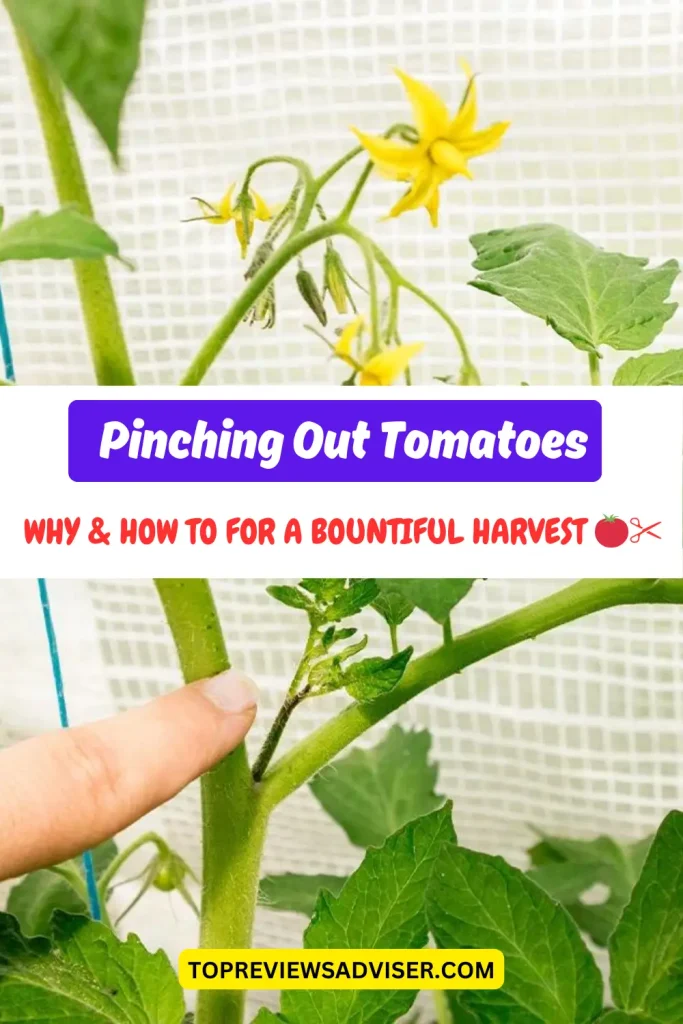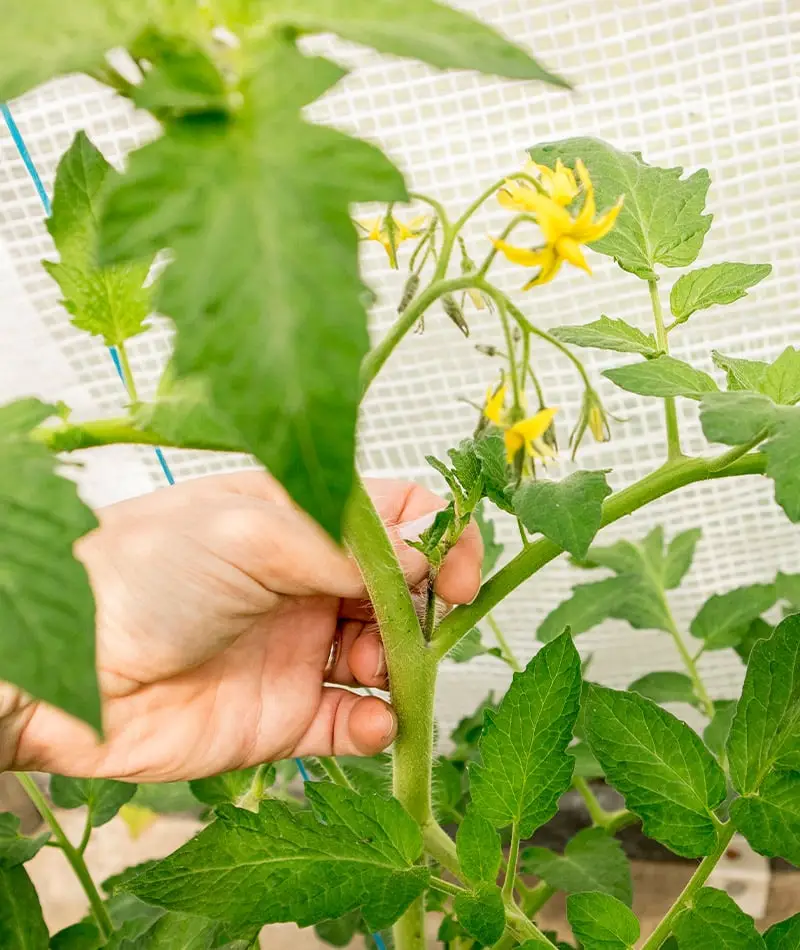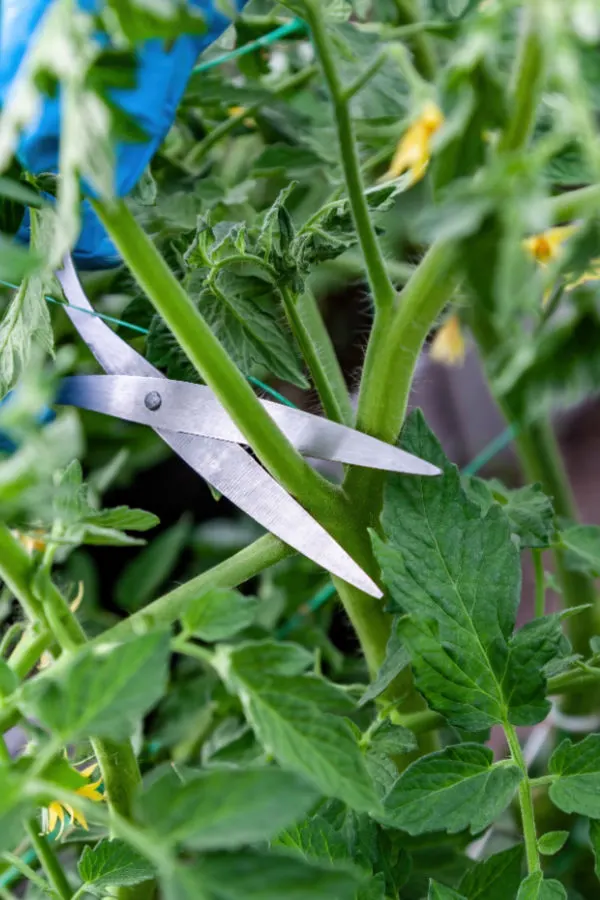When cultivating tomatoes, newcomers often encounter a puzzling task: pinching out. But what exactly is it? Why is it necessary? And how is it done? Let’s delve into these questions to gain clarity.

Why Pinch Out Tomatoes?

Pinching out tomato plants serves several purposes. Firstly, it helps manage the plant’s growth, preventing it from becoming too unruly and overcrowded. Secondly, it encourages the plant to focus its energy on producing fruit rather than excessive foliage. Lastly, it improves air circulation around the plant, reducing the risk of diseases like blight.
Promotes Growth and Air Circulation
Pinching out tomatoes involves removing the side shoots that develop between the main stem and the leaf branches. By doing so, you encourage the plant to focus its energy on producing fruit rather than excess foliage. This practice promotes better air circulation around the plant, reducing the risk of fungal diseases such as blight.
Increases Fruit Production
When you pinch out tomatoes, you direct the plant’s energy towards developing larger, healthier fruit. By eliminating competing shoots, you ensure that nutrients are channeled into the main stem and existing fruit trusses, resulting in a more abundant harvest.
Improves Fruit Quality
By removing excess growth, you allow the remaining fruit to receive more sunlight and nutrients, leading to better flavor and color development. Pinching out also helps prevent overcrowding, reducing the likelihood of misshapen or damaged fruit.
Tools Required for Pinching Out
When it comes to pinching out tomatoes, you’ll find that the tools needed are quite minimal. In fact, your trusty fingers are often the best tool for the job! However, if you prefer using tools, here’s a quick rundown of what you might find handy:
- Fingers: Yes, you read that right! Your fingers are the most versatile tool for pinching out tomatoes. Simply use your thumb and forefinger to pinch off the side shoots.
- Pruning Shears or Scissors: If you prefer a more precise approach, a sharp pair of pruning shears or scissors can also be used. Just make sure they’re clean and sharp to avoid damaging the plant.
That’s it! With just your fingers or a pair of pruning shears, you’re ready to tackle pinching out tomatoes like a pro.
How to Pinch Out Tomatoes

To pinch out tomato plants, simply locate the sucker – a small, new shoot that emerges between the main stem and a leaf branch – and pinch it off using your fingers or pruners. Be gentle to avoid damaging the main stem.
- Identify Side Shoots: As your tomato plants grow, keep an eye out for small shoots that emerge between the main stem and leaf branches.
- Locate the Junction: Side shoots typically emerge from the leaf axils, where the leaf meets the main stem.
- Pinch or Snip: Using your fingers or a sharp pair of pruning shears, gently pinch or snip off the side shoots close to the main stem. Be careful not to damage the main stem or nearby foliage.
- Repeat as Needed: Check your tomato plants regularly throughout the growing season and continue to pinch out any new side shoots that develop.
- Support the Plant: Provide adequate support for your tomato plants, such as stakes or cages, to help them remain upright as they grow and produce fruit.
What to Do with Pruned Suckers
Instead of simply discarding pruned suckers, you can utilize them in various ways to make the most out of your tomato plants:
- Propagate New Plants: One option is to propagate the pruned suckers to grow new tomato plants. To do this, place the removed suckers in a container of water, ensuring that the bottom portion of the stem is submerged. Place the container in a sunny location, and within a few days to a week, you should start to see roots developing. Once the roots are established, transplant the suckers into pots or directly into the garden soil.
- Share with Fellow Gardeners: If you have more pruned suckers than you need for propagation, consider sharing them with friends, family, or fellow gardeners. Sharing plants not only fosters a sense of community but also allows others to enjoy the fruits of their labor.
- Compost: If you’re not interested in propagating new plants or sharing the suckers, you can compost them instead. Adding pruned plant material to your compost pile or bin helps recycle nutrients back into the soil, enriching it for future plant growth.
- Mulch: Another option is to chop up the pruned suckers and use them as mulch around your tomato plants or other garden beds. Mulching helps retain moisture in the soil, suppresses weeds, and adds organic matter as it breaks down over time.
- Experiment with Rooting Hormones: For those interested in experimenting further, you can try using rooting hormones to encourage faster root development on the pruned suckers. Rooting hormones are available in garden centers and can help accelerate the rooting process, leading to quicker establishment of new plants.
Tips for Successful Pinching
Pinching out tomato plants is a simple yet crucial task that can significantly impact the health and productivity of your plants. Here’s a detailed guide on how to do it effectively:
- Inspect Regularly: Make it a habit to inspect your tomato plants regularly, ideally every few days during the growing season. Look for any new suckers that have emerged between the main stem and leaf branches.
- Pinch Early: It’s essential to catch suckers early when they’re still small and easy to remove. As soon as you notice a sucker emerging, gently pinch it off using your fingers or clean pruning shears. Be careful not to damage the main stem while doing so.
- Identify Suckers: Suckers are small shoots that develop in the leaf axils of tomato plants. They often appear as small, green growths between the main stem and a leaf branch. By removing these suckers, you’ll encourage the plant to focus its energy on fruit production rather than excessive foliage.
- Choose the Right Timing: While it’s best to pinch out suckers when they’re small, avoid doing so during extreme heat or drought conditions. Opt for cooler times of the day, such as early morning or late afternoon, when the plants are less stressed.
- Support Your Plants: As your tomato plants grow, they may become heavy with fruit, increasing the risk of stems breaking or bending. To prevent this, provide support for your plants using stakes, cages, or trellises. Supporting your plants will also make it easier to access and pinch out suckers as they develop.
- Monitor Growth Patterns: Different tomato varieties may have varying growth habits, so it’s essential to monitor the specific growth patterns of your plants. Some varieties may produce more suckers than others, requiring more frequent pinching.
- Practice Consistency: Consistency is key when it comes to pinching out tomato plants. Make it a regular part of your gardening routine to ensure that you stay on top of any new suckers that emerge. Consistent pinching will help maintain airflow, reduce disease risk, and promote healthier fruit production.
- Dispose of Pruned Material: After pinching out suckers, dispose of the pruned material properly. Remove any discarded plant material from the garden to prevent the spread of diseases or pests. Consider composting the pruned material if it’s disease-free to enrich your garden soil.
Conclusion
Pinching out tomatoes is a simple yet effective practice that can significantly improve the health and productivity of your plants.
By removing unwanted side shoots, you encourage robust growth, increased fruit production, and better overall quality. Incorporate this technique into your gardening routine to enjoy a bountiful harvest of delicious, homegrown tomatoes.